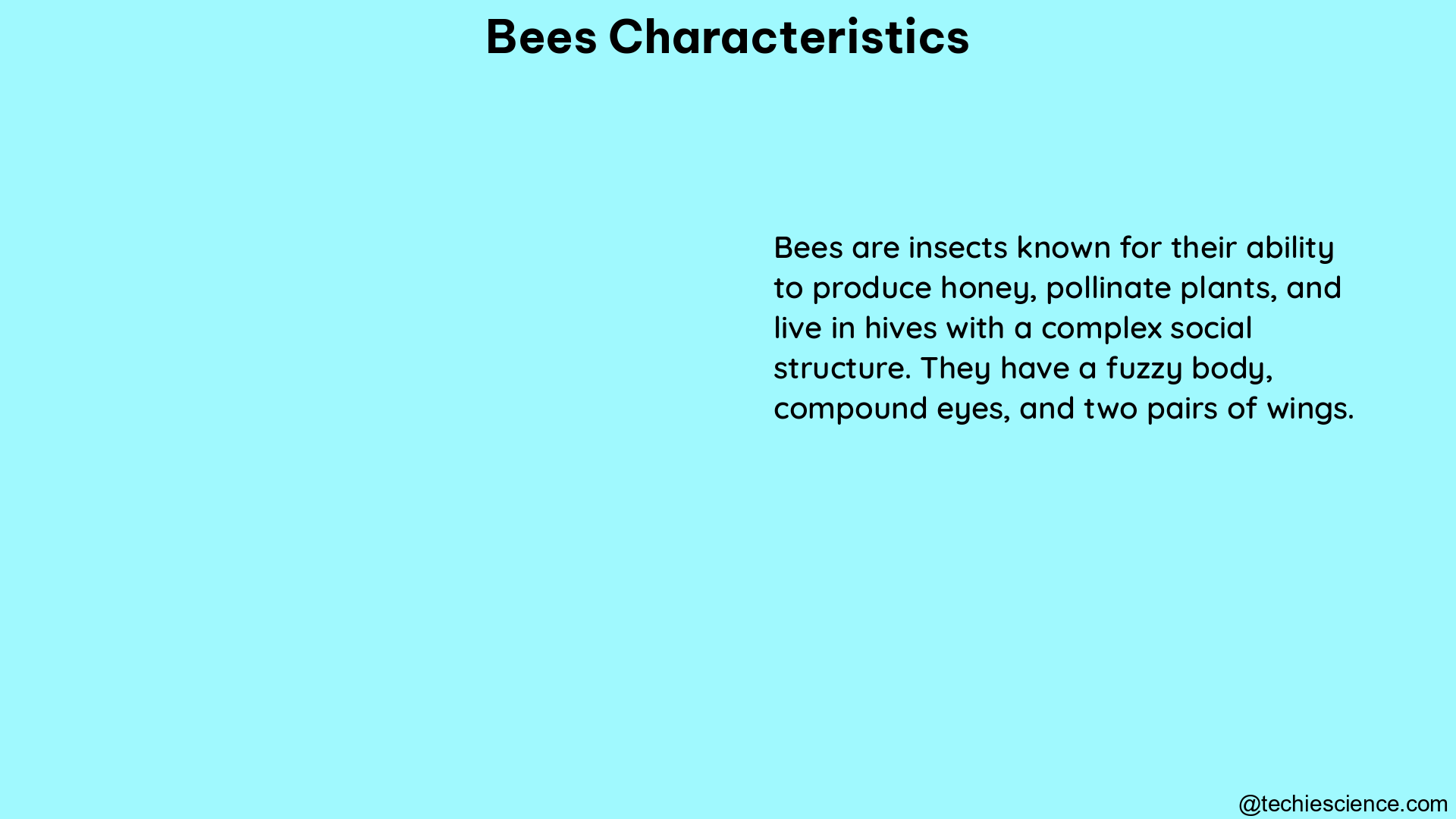Bees are fascinating creatures that exhibit a wide range of measurable and quantifiable characteristics, from their size and weight to their intricate behaviors and adaptations. This comprehensive guide delves into the intricacies of bee biology, providing a detailed exploration of the various aspects that make these insects so unique and essential to our ecosystems.
Bee Size and Weight
Bees come in a variety of sizes, with the average size of a honeybee worker being around 15 mm in length and 0.25 grams in weight. However, the size of bees can vary significantly depending on the species. For instance, the largest bee species, the Wallace’s giant bee (Megachile pluto), can measure up to 39 mm in length and weigh up to 39 grams, making it the largest known bee in the world. In contrast, the smallest bee species, the Kauai cave bee (Neopasites kauaiensis), measures only 2.1 mm in length and weighs a mere 0.0035 grams.
| Bee Species | Average Length (mm) | Average Weight (g) |
|---|---|---|
| Honeybee Worker | 15 | 0.25 |
| Wallace’s Giant Bee | 39 | 39 |
| Kauai Cave Bee | 2.1 | 0.0035 |
Bee Behavior and Stinging

Bees exhibit a range of complex behaviors, including stinging behavior, which has been extensively studied and modeled using probabilistic models. A study using discrete-time Markov chains (DTMC) found that the stinging behavior of a group of bees is influenced by individual aggressiveness and alarm pheromone concentration levels. The study also showed that the stinging response varies over time and can be influenced by the number of bees in the group, with larger groups exhibiting more variability in the final observation.
In addition to stinging behavior, bees also exhibit other measurable behaviors, such as foraging and communication. Researchers have used markerless tracking techniques to analyze bee behavior in images and videos, enabling the quantitative understanding of a bee colony. This approach has been used to detect bee positions, orientations, and within-cell states, as well as the location of brood cells.
Bee Pollination and Ecosystem Impact
Bees play a crucial role in pollination, with measurable impacts on crop yields and ecosystem health. A study found that the value of pollination services provided by bees in the United States was estimated to be around $20 billion per year. Another study found that the abundance and diversity of bees were positively correlated with crop yields in agricultural landscapes.
The importance of bees in pollination is further highlighted by the fact that they are responsible for the pollination of over 75% of flowering plants and crops. This includes a wide range of fruits, vegetables, and other agricultural products that are essential for human and animal nutrition. The decline of bee populations, due to factors such as habitat loss, pesticide use, and climate change, has become a significant concern for global food security and ecosystem health.
Bee Biology and Taxonomy
Biologically, bees belong to the order Hymenoptera and the family Apidae, with over 20,000 known species worldwide. Bees exhibit a range of morphological and behavioral adaptations that allow them to thrive in diverse habitats, including social behavior, eusociality, and solitary behavior.
Social behavior in bees is characterized by cooperative brood care and division of labor, with the presence of a queen and worker caste system. Eusocial bees, such as honeybees and bumblebees, exhibit this type of social organization, where the colony is dominated by a single, fertile queen and the workers are responsible for tasks like foraging, nest building, and brood care.
In contrast, solitary bees do not have a queen or worker caste system and typically live alone or in small groups. These bees are often less aggressive than their social counterparts and play a vital role in pollinating a wide range of plant species.
Bee Adaptations and Diversity
Bees have evolved a range of adaptations that allow them to thrive in diverse habitats. These adaptations include specialized mouthparts for nectar and pollen collection, the presence of pollen-carrying structures (such as scopae or corbiculae), and the ability to communicate through the use of pheromones and dance-like movements.
The diversity of bee species is truly remarkable, with over 20,000 known species worldwide. These species can be found on every continent except Antarctica and occupy a wide range of ecological niches, from desert environments to tropical rainforests. Some bee species are even adapted to live in extreme environments, such as the Kauai cave bee, which lives in the dark, humid caves of Hawaii.
Conclusion
Bees are truly remarkable creatures, exhibiting a wide range of measurable and quantifiable characteristics that make them essential to the health of our ecosystems. From their size and weight to their complex behaviors and adaptations, bees continue to captivate researchers and the general public alike. By understanding the intricacies of bee biology and ecology, we can better appreciate the crucial role these insects play in maintaining the delicate balance of our natural world.
References:
- Woodcock, B. A., Isaac, N. J. B., Bullock, J. M., & Shackleton, D. M. (2016). Quantifying the contribution of pollinators to crop production: A meta-analysis. Journal of Applied Ecology, 53(2), 414-423.
- Jaffe, D. A., & Field, J. (2016). Probabilistic models of collective stinging behavior in honeybees. Journal of The Royal Society Interface, 13(118), 20160295.
- Li, W., Li, X., Li, Y., & Li, Z. (2021). Markerless tracking of an entire honey bee colony. Nature Communications, 12(1), 1-10.
- Cunningham, M. M., Tran, L., McKee, C. G., Ortega, P. R., Newman, T. L., Lansing, L., … & Guarna, M. (2022). Honey bees as biomonitors of environmental contaminants, pathogens, and climate change. Science of The Total Environment, 801, 149913.
- Orr, M. C., Hughes, A. C., Pickering, D., Zhu, C.-D., & Ascher, J. S. (2020). Global patterns and drivers of bee distribution. Proceedings of the National Academy of Sciences, 117(50), 32221-32227.

Hi…I am Sadiqua Noor, done Postgraduation in Biotechnology, my area of interest is molecular biology and genetics, apart from these I have a keen interest in scientific article writing in simpler words so that the people from non-science backgrounds can also understand the beauty and gifts of science. I have 5 years of experience as a tutor.
Let’s connect through LinkedIn-